Anticipatory Activity System (AAS) and A Possible Book

An abstract model for understanding the "Self, Other, Present, Future" complex
The Anticipatory Activity System (AAS) framework is inspired by Activity Theory and Anticipatory System theory. It aims to offer an abstract model for understanding "Self, Other, Present, Future".
While the traditional Activity Theory focuses on "Exploitative Activity", the AAS framework is more about "Exploratory Activity".
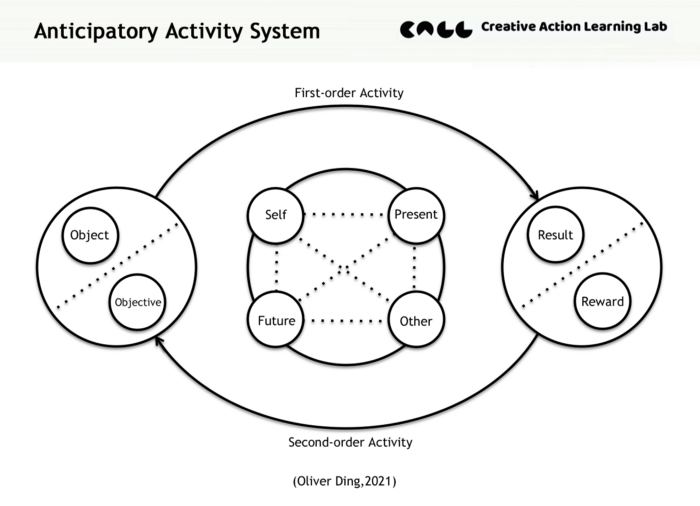
The core of the AAS framework is the Transactional Anticipatory System which considers the “Self, Other, Present, Future” situation. See the diagram below:
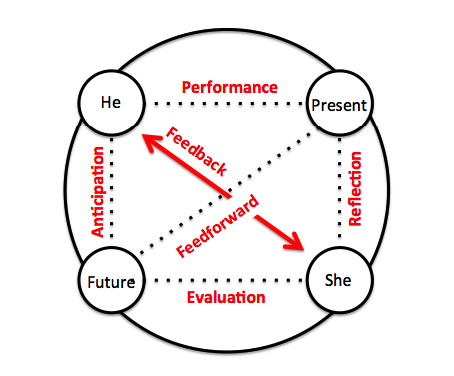
You can find more details in The iART Framework and The “Relevance” Thematic Space.
I also worked on expanding the basic model of AAS. The diagram below highlights five movements of the AAS framework: Unfolding, Discovering, Producing, Modeling, and Storytelling.

In order to test the AAS framework, I applied it to Life Transitions (LT) and developed the AAS4LT framework. It considers “Life Discovery Project” as Second-order Activity and “Life Developmental Project” as a First-order Activity.
Based on the AAS4LT framework, I developed the AAS4LT 1:1 life coaching program, an eight-step service.

You can find more details in Life Discovery: The AAS Framework.
A Possible Book
Today (August 12, 2022) I finished a 36-page introduction to the AAS framework with the following picture. You can consider them as a prototype of a possible book.
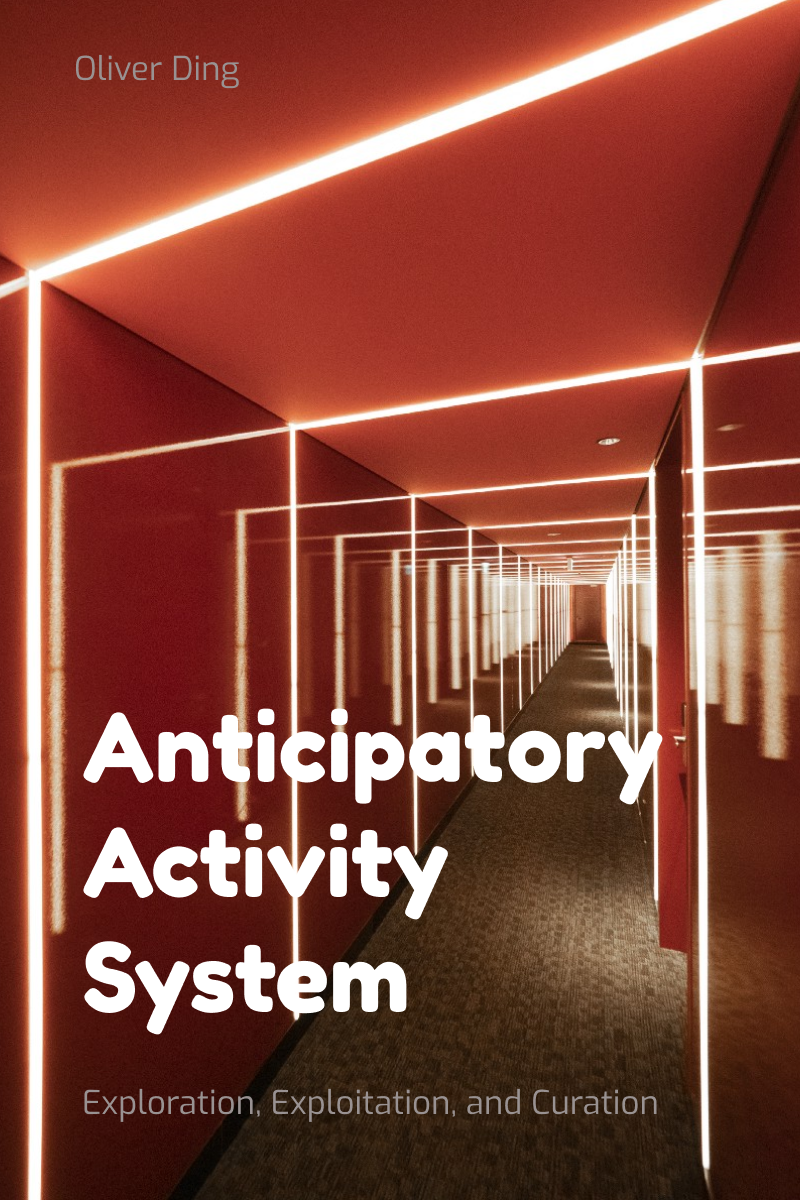
I wrote a rough TOC for the possible book in the last section of the introduction.
Part One: Speculation
Part One focuses on theoretical development. I will introduce several theoretical resources behind the AAS framework and discuss the developmental process of core concepts of AAS.
- Activity Theory
- Anticipatory Theory
- Relevance Theory
- Self-determination Theory
- Networks of Enterprise
- Curativity Theory
- An Intermediate Framework
Part Two: Movements
Part Two introduces the basic model of the AAS framework and the significant movements.
- Discovering
- Producing
- Unfolding
- Modeling
- Storytelling
- Evaluating
Part Three: Modules
Part Three introduces several sub-frameworks and models. They can be used as modules for designing different programs.
- The iART framework
- The "Anticipatory - Performance" Complexity
- A Typology of Relevance
- The Defining Zone
- Developmental Project Model
- Life Discovery Model
- The Opportunity Formula
- The Achievement Chain
Part Four: Experiments
Part Four shares some stories behind the historical development of the AAS framework.
- Shaper & Supporter Lab
- The AAS Board and the AAS4LT program
- The Knowledge Engagement Program
- The Slow Cognition Project
- Life Strategy Activity
A Real Book (Draft)
On Dec 15, 2022, I edited a TOC for a book (draft) titled Advanced Life Strategy: Anticipatory Activity System and Life Achievements.
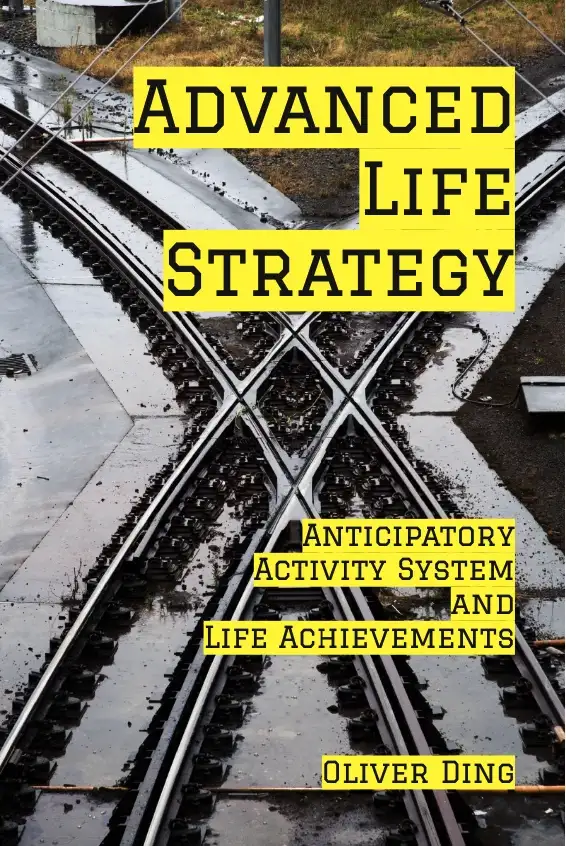
- 5 parts
- 29 chapters
- 60 articles
- Total 845 min read
- Total 223,925 words (about 448 single-spaced pages)
The book is an outcome of the Life Strategy project which aims to develop a systematic approach to life strategy for knowledge creators. The concept map below is the summary of the approach.
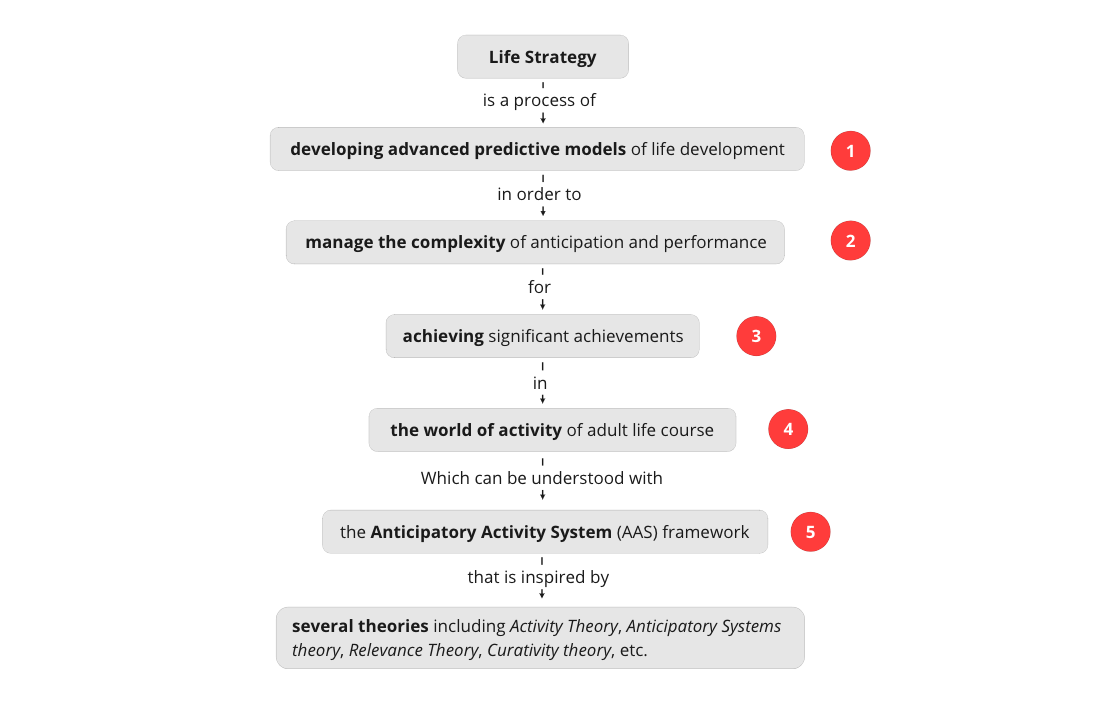
The Life Strategy Project is inspired by Alfred Schutz, James G. March, and David McClelland. See the concept map below.
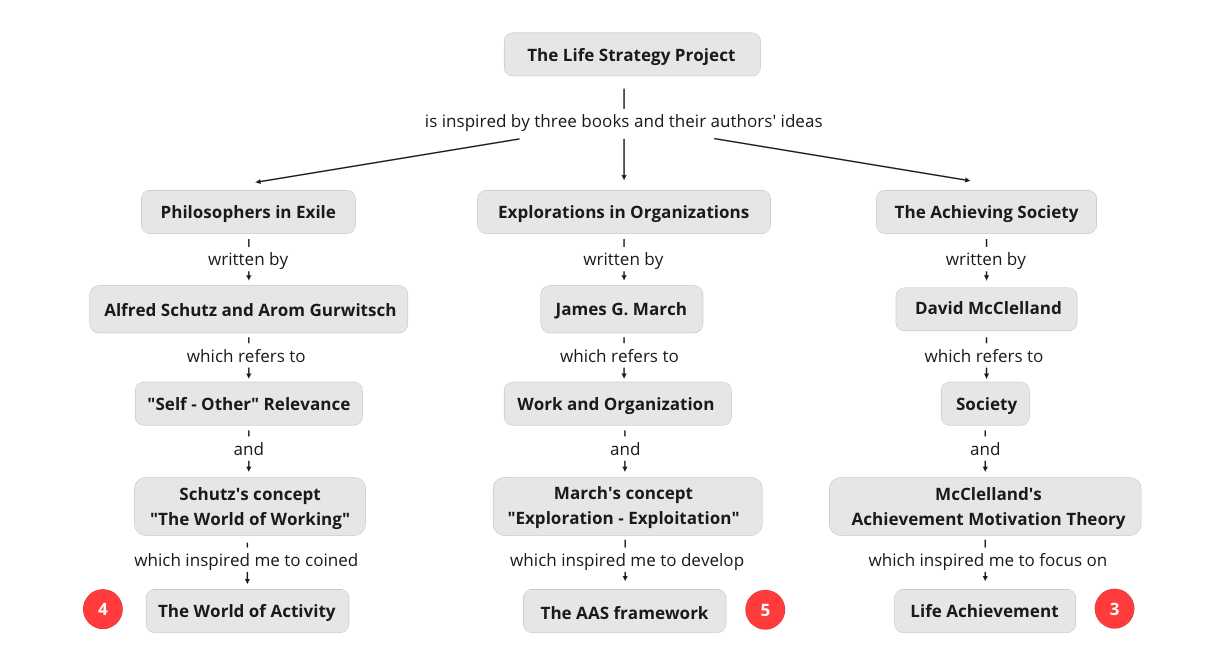
Inspired by Ping-keung Lui’s theoretical sociology, I used the "ontology - realism - hermeneutics" schema as a reference frame to curate several frameworks for the life strategy project.

The Anticipatory Activity System (AAS) framework is associated with the Realism layer.
You can find more details in Advanced Life Strategy: Anticipatory Activity System and Life Achievements.
The Development of AAS (August 21, 2021 - August 26, 2022)
On August 28, 2022, I reflected on the development of AAS and wrote a long article.
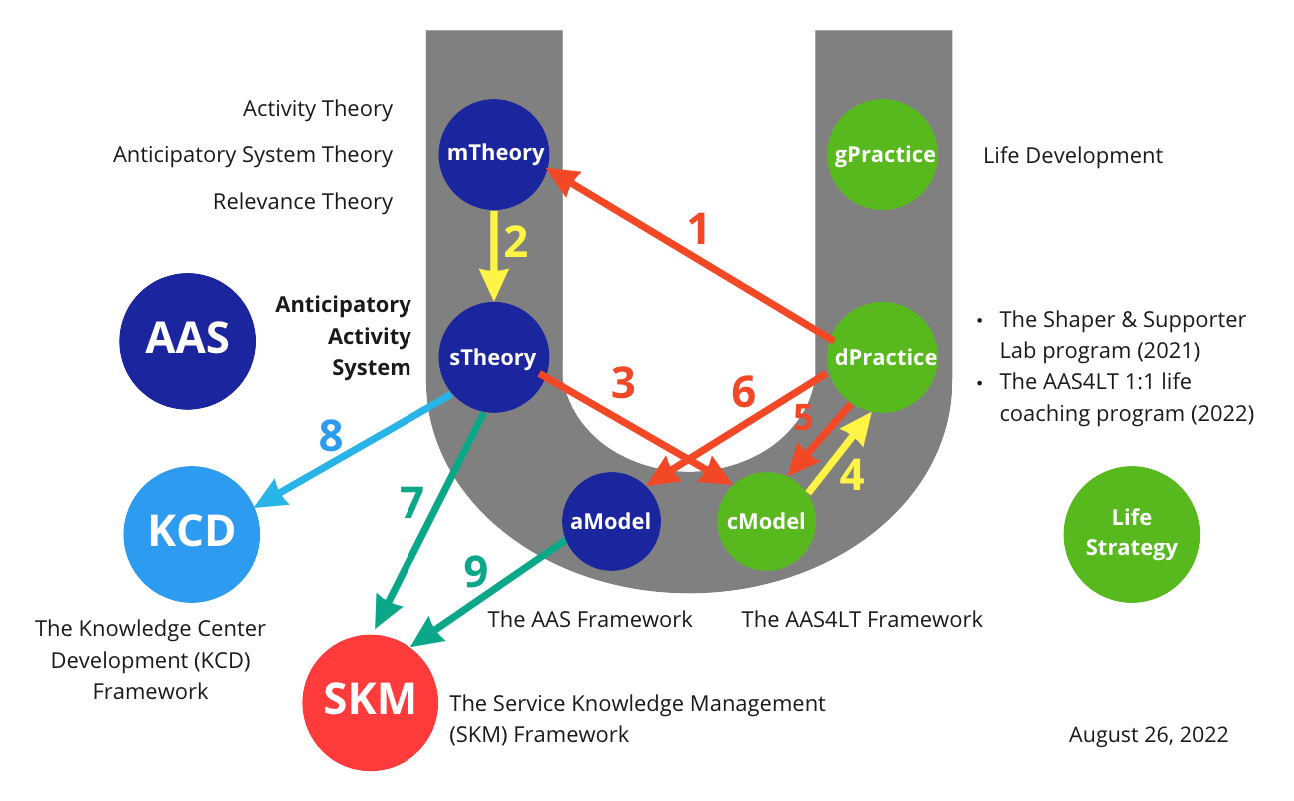
I found nine moves between several thematic spaces.
You can find more details in Slow Cognition: The Development of AAS (August 21, 2021 - August 26, 2022).
Life Strategy Center
I also host a knowledge center called Life Strategy Center in order to further develop the Advanced Life Strategy approach and the AAS framework.
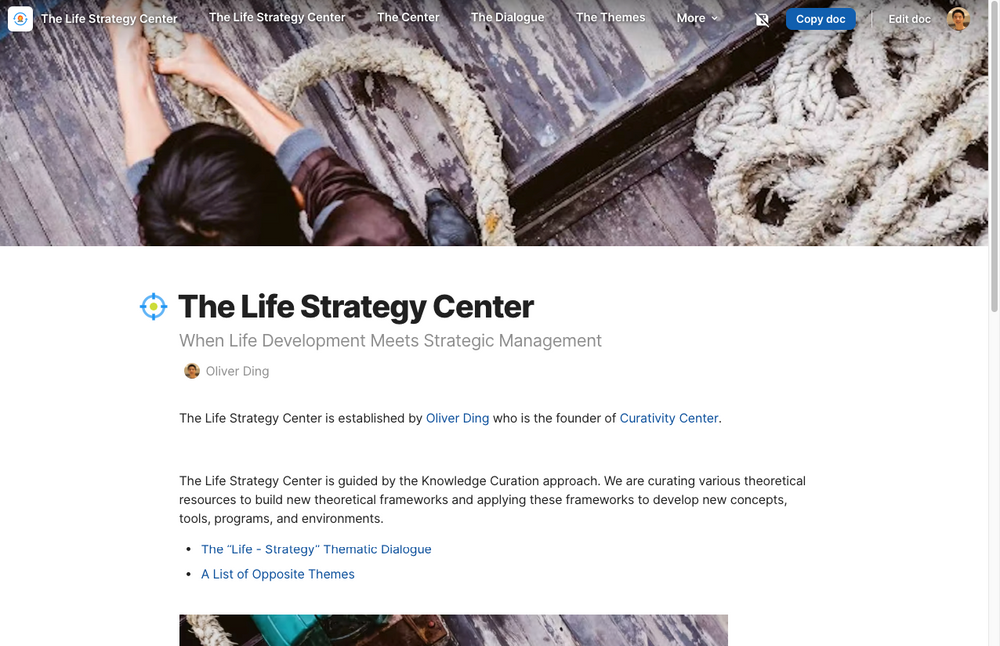
For discussing Life Strategy Activity, the AAS framework defines the following modules:
- First-order Activity: Developmental Project
- Second-order Activity: Life Discovery Project
Based on the Anticipatory Activity System (AAS) framework, we developed a series of modules that form a tool kit for Life Strategy Activity.
- iART Framework
- The “Anticipation - Performance” Complexity
- A Typology of Relevance
- Developmental Project Model
- Modeling Projects
- Life Discovery Model
- The Opportunity Formula
- The Achievement Chain
- The Persona Dynamics Framework
We also work on the Life Discovery Toolkit and the Life Curation Toolkit.
You can find more details in https://coda.io/@oliverding/the-life-strategy-center
